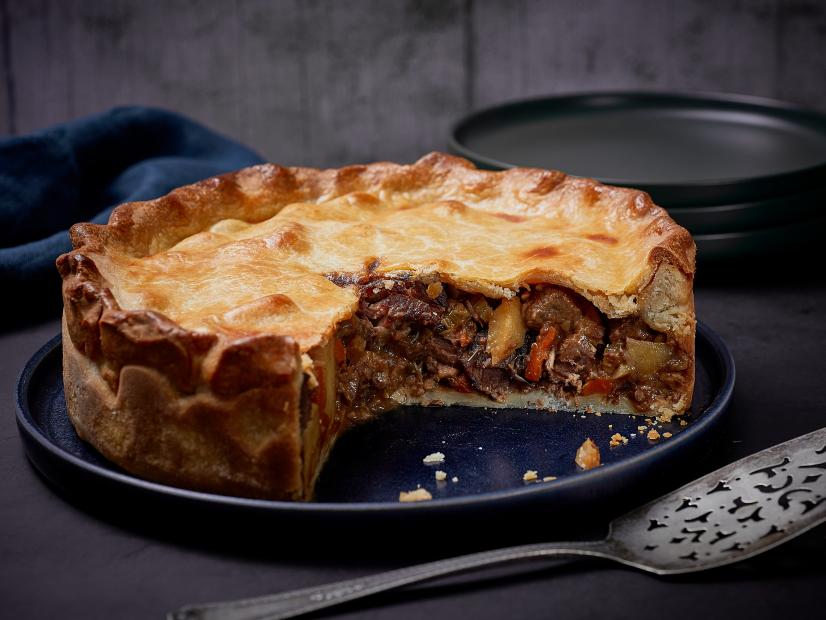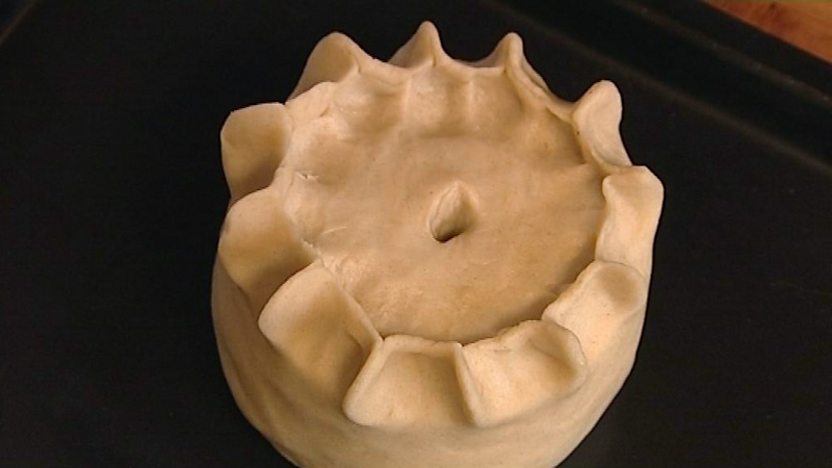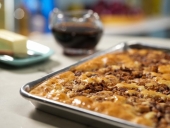
 6
6




Pastry:
3/4 cup (168 grams) unsalted butter
3/4 cup (180 milliliters) water
2 3/4 cups (370 grams) all-purpose flour, plus more for dusting
1 teaspoon kosher salt
Meanwhile, make the pastry by combining the butter and water in a large saucepan. Bring to a boil and melt the butter. Remove from the heat and add the flour and salt. Stir to bring together and turn out onto a lightly floured surface. When cool enough to handle, knead the dough until very smooth and a little elastic. Wrap in plastic and set aside to rest for 30 minutes.

Invasive plants are Earth's way of insisting we notice her medicines. Stephen Herrod Buhner
Everyone learns what works by learning what doesn't work. Stephen Herrod Buhner
 3
3




Radis.
Living and growing on my small homestead near a project of permaculture school.
"There are no non-radical options left before us" Naomie Klein in This Changes Everything
 10
10




Raphaël Blais wrote:Wrong link ? it bring me to a meat pie..
“It’s said war—war never changes. Men do, through the roads they walk. And this road—has reached its end.”
 13
13











 8
8











 4
4




atlasobscura said, "A coffin, spelled coffyn in 12th-century English, referred to self-standing pastry made from flour, water, and sometimes fat. Like a sort of medieval Tupperware, coffins preserved the foods they contained and were rarely eaten.
eater said, "What was the first pie flavor?
The written record tells us that food was baked in dough in Ancient Greece, and according to the American Pie Council, the first recipe for pie, "a rye-crusted goat cheese and honey pie," was published by the Romans.
Wikipedia said, "Huff paste is a cooking technique involving making a stiff pie shell (or coffyn) using a mixture of flour, suet, and boiling water. The pastry when cooked creates a tough protective layer around the food inside. When cooked, the pastry is generally discarded as it is virtually inedible. However, the shell becomes soaked with the meat juices and historically was sometimes eaten by house servants after the meal had concluded.
Huff paste's main purpose is simply to create a solid container for the pie's ingredients. The flour itself is stronger than normal flour, often made from coarsely ground rye, and suet, which is mixed with hot water to create what was an early form of hot water crust pastry.
Huff paste can be moulded into a variety of shapes, called coffyns or coffers, similar to a Cornish pasty. A benefit of these early pies was that meat could be preserved for several months and the food contained within was protected from contamination. It also allowed food to be preserved so that country dwellers could send it over long distances as gifts to their friends in other towns or areas.
Invasive plants are Earth's way of insisting we notice her medicines. Stephen Herrod Buhner
Everyone learns what works by learning what doesn't work. Stephen Herrod Buhner
 8
8




Moderator, Treatment Free Beekeepers group on Facebook.
https://www.facebook.com/groups/treatmentfreebeekeepers/





 10
10




 1
1




William Bronson wrote: The ingredients sounds a great deal better than food made with hydrogenated oils.
Invasive plants are Earth's way of insisting we notice her medicines. Stephen Herrod Buhner
Everyone learns what works by learning what doesn't work. Stephen Herrod Buhner
 8
8











 8
8




William Bronson wrote: I do wonder if these crusts were all that unpleasant to eat.
Just as likely, they were too dirty to eat, as they served as packaging.
Mind you I am a clean your plate kind of guy who will eat the garnish(I paid for it!)
 4
4











 6
6




 7
7





 5
5




How Permies works: https://permies.com/wiki/34193/permies-works-links-threads
My projects on Skye: The tree field, Growing and landracing, perennial polycultures, "Don't dream it - be it! "
 6
6




 5
5




 2
2




 1
1











 1
1




 7
7




 1
1




 3
3





Invasive plants are Earth's way of insisting we notice her medicines. Stephen Herrod Buhner
Everyone learns what works by learning what doesn't work. Stephen Herrod Buhner






 2
2




William Bronson wrote: I do wonder if these crusts were all that unpleasant to eat.
Just as likely, they were too dirty to eat, as they served as packaging.
Mind you I am a clean your plate kind of guy who will eat the garnish(I paid for it!)
...
"Also, just as you want men to do to you, do the same way to them" (Luke 6:31)






 2
2




"Also, just as you want men to do to you, do the same way to them" (Luke 6:31)
 2
2




I am only one, but still I am one. I cannot do everything, but still I can do something; and because I cannot do everything, I will not refuse to do something that I can do. (E.E.Hale)






 1
1




Anita Martin wrote:Interesting, never heard of this kind of pie. When I read boiling water I had to think of German "Brandteig" which is a dough which is actually cooked in the pot after combining the ingredients. I am sure there is an English word for it.
I mostly know of sweet pastry done with this dough, like churros or éclairs/profiteroles. Looks like it is called choux dough?
To me it looks a bit complicated although I am always trying out new recipes. But as I don't have a pastry bag to shape them I couldn't really make any of these.
"Also, just as you want men to do to you, do the same way to them" (Luke 6:31)




I am only one, but still I am one. I cannot do everything, but still I can do something; and because I cannot do everything, I will not refuse to do something that I can do. (E.E.Hale)




Invasive plants are Earth's way of insisting we notice her medicines. Stephen Herrod Buhner
Everyone learns what works by learning what doesn't work. Stephen Herrod Buhner












 5
5




How Permies works: https://permies.com/wiki/34193/permies-works-links-threads
My projects on Skye: The tree field, Growing and landracing, perennial polycultures, "Don't dream it - be it! "

|
Don't play dumb with me! But you can try this tiny ad:
Freaky Cheap Heat - 2 hour movie - HD streaming
https://permies.com/wiki/238453/Freaky-Cheap-Heat-hour-movie
|






